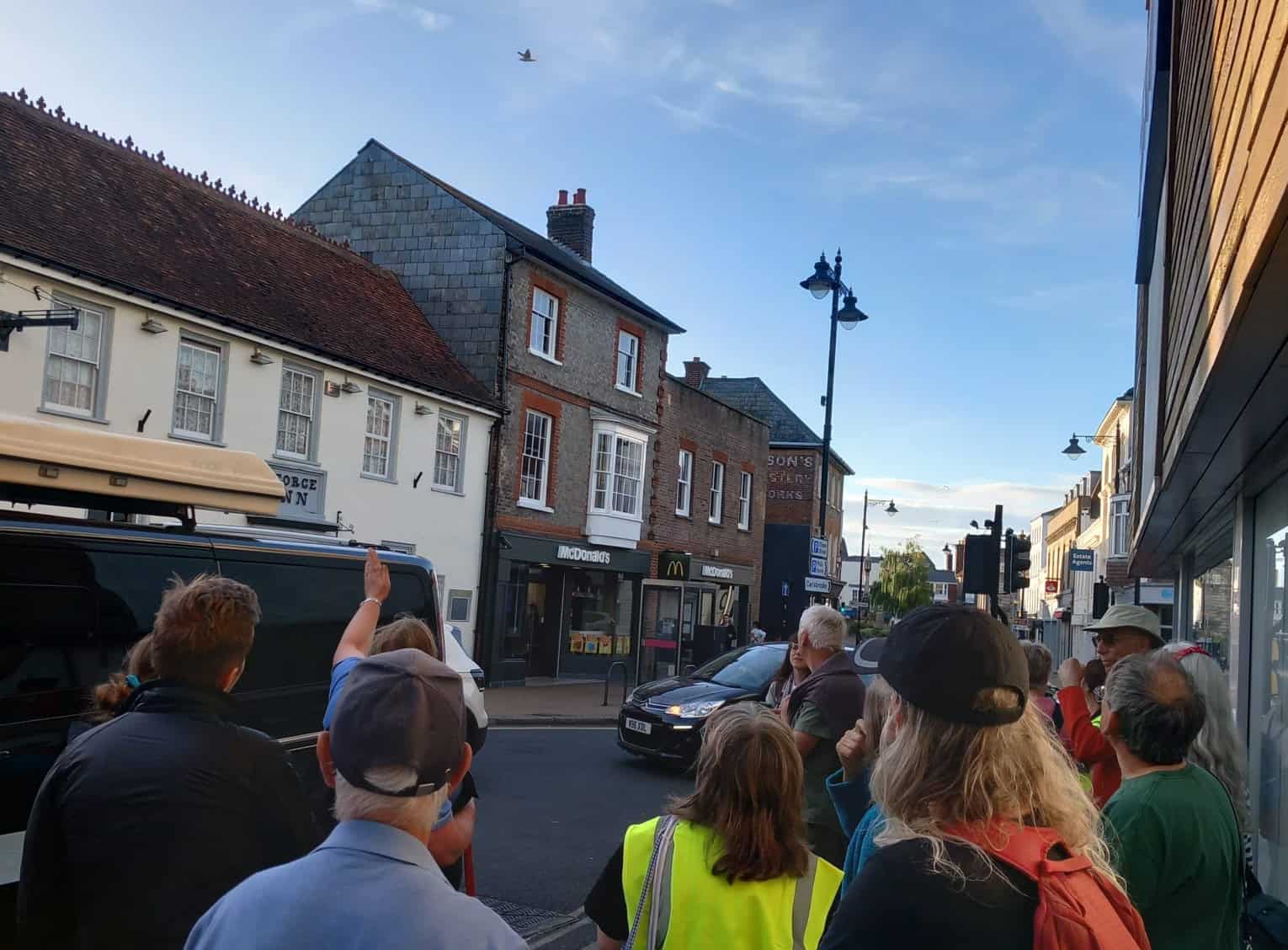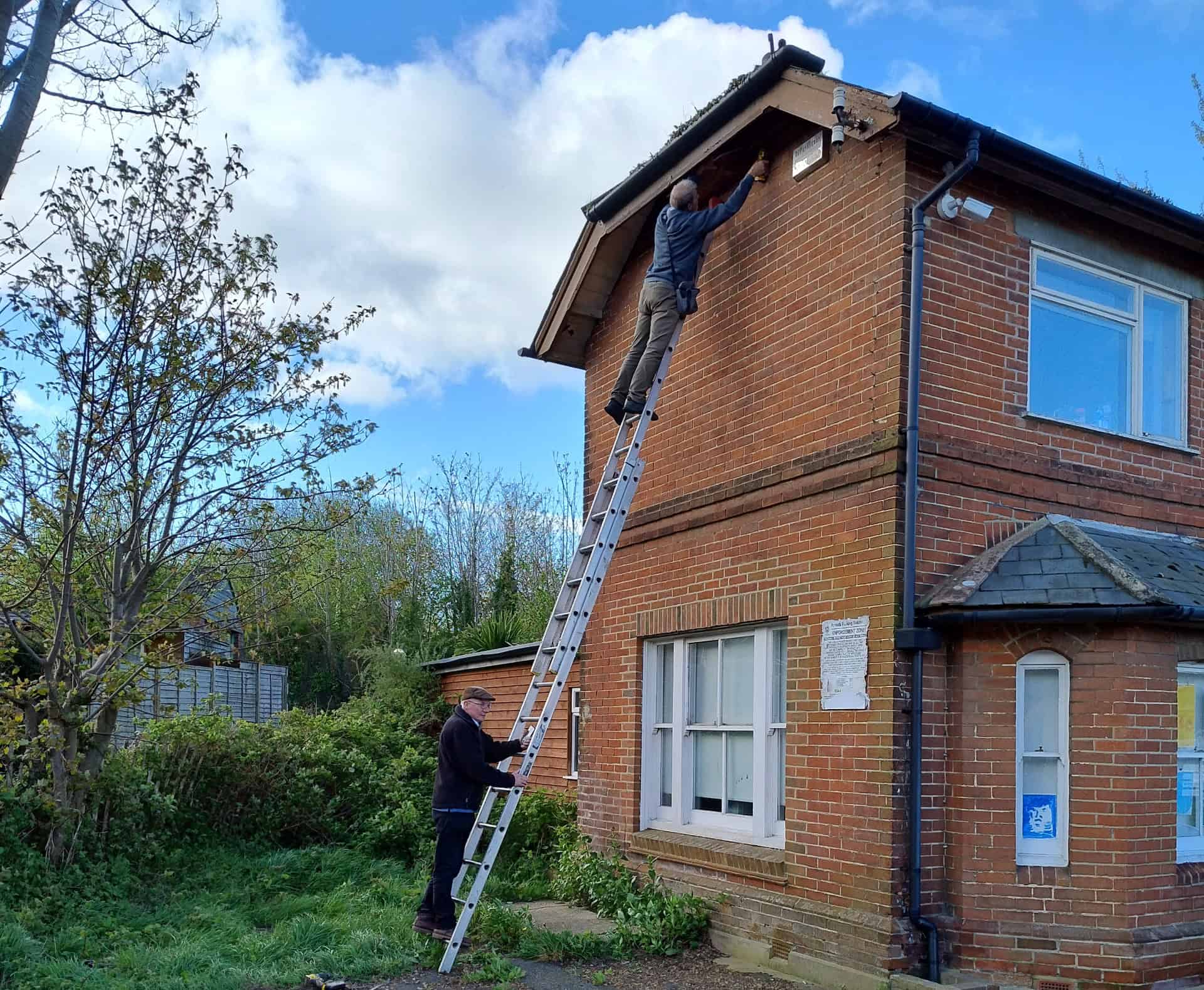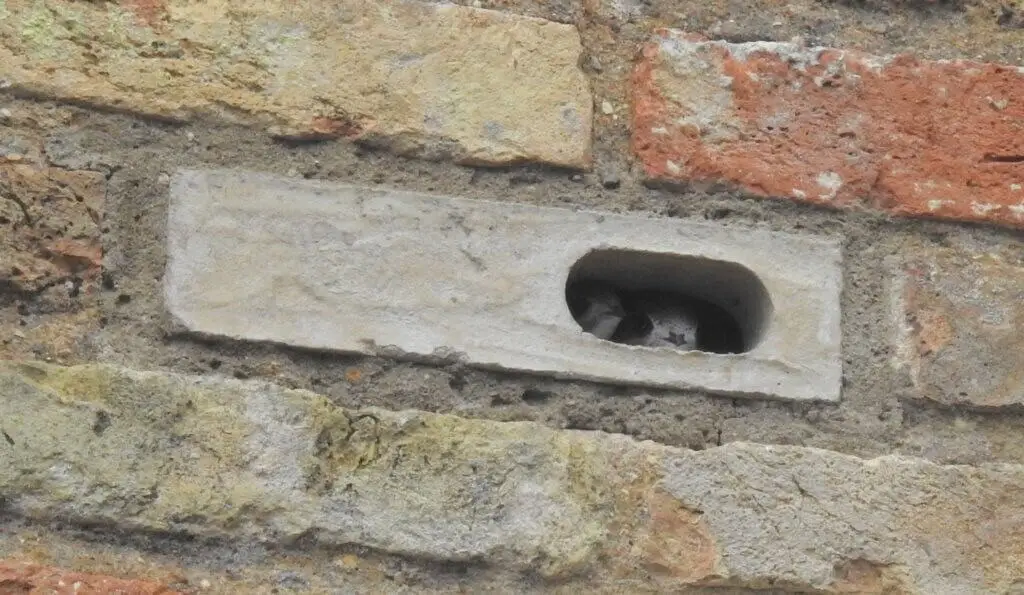Caroline Dudley, the IW Swift Box Scheme co-ordinator, shares this very important news. Ed
Swifts are one of the sights and sounds of the summer for many people.
They migrate here from Africa to breed and on warm summer evenings treat us to spectacular aerial displays as they twist and turn in chasing groups low over the rooftops giving their distinctive screaming calls.
Devastating decline
The full name of the species of swift that breeds in the UK and on the Isle of Wight is the Common Swift. However, it is no longer as ‘common’ as it once was having declined by over 50% in the UK since the year 2000.
Indeed, it is now on the Red list of Birds of Conservation Concern. Numbers are thought to be plummeting largely due to the loss of nest sites, which are in spaces high in walls and roofs of older buildings.
Return to same nest site every year
They access these sites via small holes and narrow gaps but these holes and gaps are filled in during renovation work.
Swifts are extremely site faithful and will use the same nest site over their entire lives, so when the gaps are filled in, they lose homes they may have nested in for many years (Swifts can live 17 years or more).
Loss of access holes
Sometimes the old building they are nesting in is destroyed entirely through demolition and replaced with a modern structure.
Modern building techniques, which include the installation of plastic fascias and soffits, do not provide the access holes that the birds need.
Swift Awareness Week
The national Swift Awareness Week this year runs from 29th June to 7th July and has been held for a week each year since 2018 to celebrate this wonderful bird, to bring attention to its decline and to encourage people to do what they can to help.

Swift Walk
Here on the Isle of Wight, a walk was arranged at the beginning of Swift Awareness Week to show people some of the Swifts that nest in Newport.
The walk was part of the Isle of Wight Biosphere Festival events programme and was run jointly by members of the Isle of Wight Natural History & Archaeological Society (IWNHAS) and the group Wight Swifts (@Wight Swifts on Facebook).

Newport has many old buildings and not all have been renovated so there are still some nesting places available for Swifts.
We saw several screaming parties and birds going in and out of three different nest sites – two in old buildings and one in a nestbox designed for Swifts.
It was encouraging to see the nestbox being used as it shows that we can help Swifts by providing them with alternative homes.
Hampshire swift box scheme
Here on the Isle of Wight, we are lucky in that members of the group Hampshire Swifts make Swift nestboxes and have for the past three years been coming across the Solent to install any ordered via the Isle of Wight Swift Box Scheme, which is a scheme led by the IWNHAS through its project iWatch Wildlife thanks to funding from Isle of Wight National Landscape.

This year, 64 boxes were installed by Hampshire Swifts stalwarts Tim Norriss and Roger Maynard over a three-day period. These were mainly erected on homes, but two double nestboxes were installed on public buildings at Newport Quay (see below), one on a site where several pairs already nest.
Over the three years that the scheme has been running, almost 140 boxes for Swifts have now been installed, which is great news, but more still needs to be done to help our declining Swifts.

Order now
If you would be interested in ordering a nestbox via the scheme, please send an e-mail to iwswifts@gmail.com to register an interest.
Boxes need to be sited five metres high under the overhang of the roof and there should be a clear flyway in front of the box.
Report sightings
Another way to help Swifts is by keeping an eye open for places where they are nesting or where birds are coming down low and screaming past buildings, which is what they do when communicating with birds occupying nest sites.
The nest sites and low-flying screaming birds may be logged on the RSPB Swift Mapper website. If you know of any existing nest sites where renovation or demolition work is due to take place, please inform iwswifts@gmail.com
How developers can help
Developers can really help Swifts and other Red-listed birds such as House Sparrows by installing Swift bricks into new builds. These are integrated into the fabric of the building, require no maintenance once installed and become permanent homes for wildlife.

It is an excellent way that developers can increase biodiversity on new housing estates to benefit both birds and people. Examples of nest bricks may be found online or contact iwswifts@gmail.com for a list of suppliers and further information.
We need to act now
So, there are ways that we can help our wonderful Swifts to ensure that they will continue to delight us with their aerial acrobatics in the future… but we need to act now.




